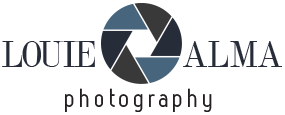Create Wildlife & Nature Photos with a Dramatic Dark Style (VIDEO)
Experienced outdoor photographers understand why bright-and-vivid isn’t always the most compelling approach when photographing landscapes or wildlife subjects in the field, especially if you want to avoid a me-too look and create attention-grabbing images that stand out from the crowd.
Today’s quick episode from the PHLOG Photography YouTube channel presents a straightforward Lightroom workflow for accomplishing this impactful effect that’s easy enough for users of all skill levels. All it takes is a few basic enhancements in combination with simple masks.
German Instructor Christian Mohrle is one of our favorite outdoor photographers and he’s just as adept behind the computer as he is in the field. His demonstration image for today’s 12-minute episode is a tight shot of an impressive bird known as the Southern Ground Hornbill, and we suggest downloading his Raw file from the link beneath the video so you can make the enhancements yourself as the simple steps are explained.

The first step is applying a bit of denoising because the photo was captured at a high ISO that requires some quite heavy editing. He’s working in the Details panel and clicks the Denoise checkbox, after which Lightroom does all the heavy lifting to clean up the shot.
There are a few other basic adjustments required before you get to the cool stuff, the first of which involves eliminating a few distracting elements that detract from the shot. He does this by clicking on Lightroom’s Remove tool near the top of the screen while making sure to select the Generative AI option. Eliminating a few branches and other distractions is easy by following Mohrle’s instructions.
Next comes a few other preliminary global adjustments to prepare the shot for the transformational selective enhancements the follow. He modifies overall exposure to eliminate the hazy look, increases texture and dehaze, while dropping vibrance and color temperature, and changing the profile from Adobe Color to Adobe Standard.

The image is now significantly improved, and the remainder of the video demonstrates what Mohrle call the “fun part” which involves simple masking, final color adjustments, and some very judicious sharpening. Compare his before/after examples and you’ll likely to exclaim “WOW!”
Then pay visit to the PHLOG Photography YouTube channel where you’ll find many more editing tutorials for landscape and wildlife enthusiasts.
You may also benefit from the tutorial we featured with another post-processing expert who demonstrates how to employ a new Lightroom masking tool that creates amazing enhancements when editing landscape, nature, and environmental portrait photographs.
Color Space Tips: Should you Shoot photos in sRGB or Adobe RGB? (VIDEO)
The concept of color space is one of the most misunderstood topics in photography, and some shooters don’t even realize that their camera offers a choice of options from which to choose. This quick tutorial from top pro John Gress clears up the confusion by explaining the difference between Jpeg and Raw and when you should employ one or the other.
Gress has a successful 20-year career creating visuals for premium brands like ESPN, Nike. Lufthansa, and others. His editorial work has appeared in prominent national publications, like Sports Illustrated, Time, Glamour and People. And the tutorials he posts are designed to help you avoid struggles he faced early on when first starting out.

Today’s eight-minute episode kicks off with this promise: “You’ll learn exactly how color profiles like sRGB, Adobe RGB, and ProPhoto RGB affect your images in the camera, during editing, and in delivery. He drives home all the key points with easy-to interpret illustrations.
The comprehensive episode covers a wide-range of important topics, with answers to common questions like how using the wrong color space can make images look dull or flat, when it’s safe to use sRGB, and why having a wide gamut RGB monitor is essential for achieving a pro-quality workflow.
Here’s the bottom line in a nutshell: “Whether you’re shooting for the web, delivering files to clients, or prepping images for high-end prints, this guide will help you get consistent, accurate color from start to finish.”

Gress’ popular YouTube channel offers many more how-to videos on a wide variety of topics, from gear evaluations, shooting techniques, and straightforward Lightroom and Photoshop editing advice.
Once you’ve finished this lesson, be sure to take a look at the recent tutorial we featured with another accomplished shooter who demonstrates how he captures professional-looking travel and nature photographs with a full-featured smartphone.
How to INSTANTLY Boost the Dynamic Range of Your Photos (VIDEO)
Dynamic range is a key concept in photography that’s important to understand if your goal is to create properly balanced images. This quick from James Feaver provides a couple straightforward secrets for precisely adjusting this essential component of every great shot.
Feaver is a freelance photographer and educator who says he loves helping beginning shooters find their way and elevate their skills. He describes today’s topic like this: “You want to make sure that your photo has just the right amount of dynamic range. Not enough and the photo will appear flat, while too much and the image looks like an over-cooked HDR.”
In Feaver’s words, “dynamic range just refers to how many stops of light your camera can capture and this variable differs from one model to another.” Another key consideration is the file format you use because Raw photos capture more dynamic range than Jpegs. Another key benefit of shooting in Raw is the control you have for manipulating dynamic range with precision.

Feaver’s demonstration shot is a prime example of the challenge at hand. It’s a nicely composed landscape scene with a very bright sky, majestic mountains looming in the distance, and a foreground that so dark you can barely make out trees. In other words, a broad range of tones in different important areas within the frame.
He opens Lightroom and gets to work by evaluating the histogram and determining where dynamic range needs to be expanded. He then demonstrates a few simple techniques for creating an ideal balance of tones.
His first trick involves an attribute called “clipping—something you definitely want to avoid. Feaver explains that clipping occurs “when we overdo dynamic range and push things thing too far.” Then he illustrates a more thoughtful approach, using basic Lightroom tools in the correct order, to achieve natural-looking enhancements.

The lesson then turns to a step-by-step discussion of how simple masking techniques factor into the equation, along with a few additional tips for refining your dynamic range adjustments. Be sure to visit the popular Photo Feaver YouTube channel for more shooting and editing advice.
We also suggest watching the quick primer we featured earlier with another post-processing expert who presents a two-minute beginners guide to Photoshop’s versatile Pen tool for enhancing your photographs with precise masks, accurate selections, custom shapes and more.
Advertisement
Subscribe to Our Newsletter
Popular Posts
Pages
- 360 Interactive Virtual Tour Sample
- About the Photographer
- Business Portrait Photography
- Concert Photography
- Event Photography
- Fashion Photography
- Food Photography
- Landscape Photography
- Portrait Photography
- Product Photography
- Real Estate Photography
- Sport Photography
- Still Photography
- Street Photography
- Travel Photography
- Videography





